October 5, 2021
Power Up Plant Collaborations!
You and I know that we accomplish a lot more as a community. The same thing goes for the natural world. When plants collaborate with our environment and each other, diverse wildlife comes along to enrich our lives with beauty and discovery. Here’s common checkered-skipper on fall aster, just coming into bloom.
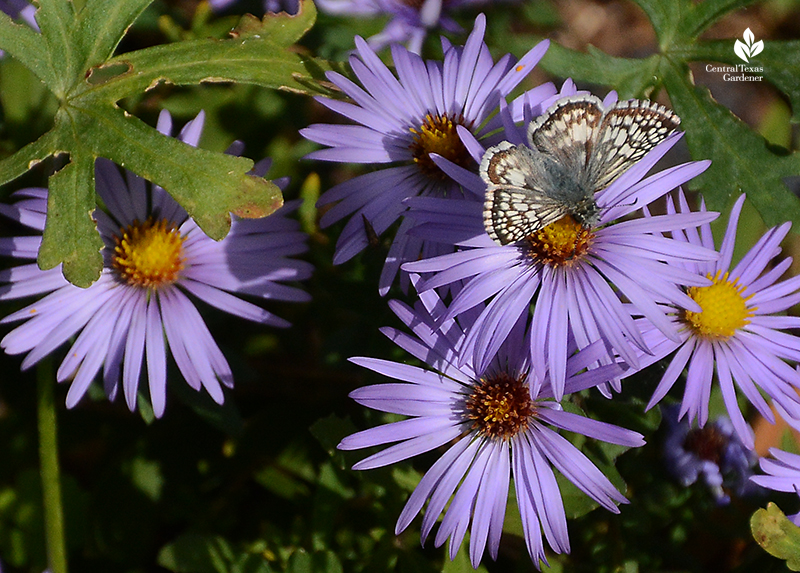
So let’s explore how plants work together as an ecosystem with CTG host and environmental designer John Hart Asher and Hannah Armstrong, horticulturist at the Lady Bird Johnson Wildflower Center.
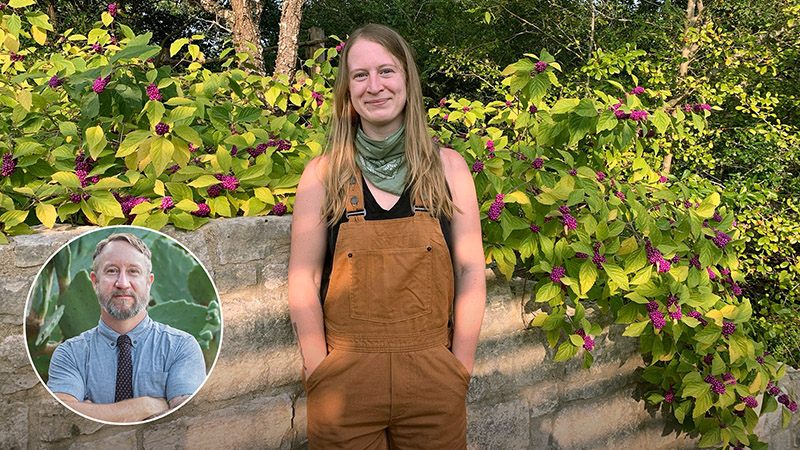
We don’t need to be plant or wildlife experts. In this week’s conversation, Hannah noted, “I think one of the best things we can do for wildlife and for pollinators specifically is planting native plants. So even if you’re not sure of what exactly those specialized relationships are between a plant and a pollinator, knowing that native plants have evolved in a place in the same place that the pollinators have, it’s a really good likelihood that they’ve got a symbiosis going on.”
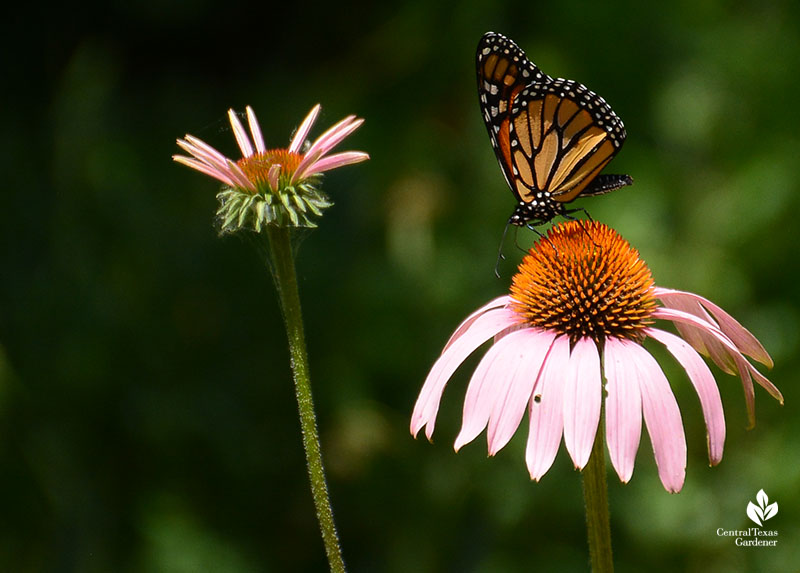
Coincidentally, Steve and Brigitte Tannen submitted this picture of caterpillars on an end-of-summer sunflower. As a larval host for Painted Lady butterflies, these spent leaves still feed a hungry troop that will pupate into lovely adults.
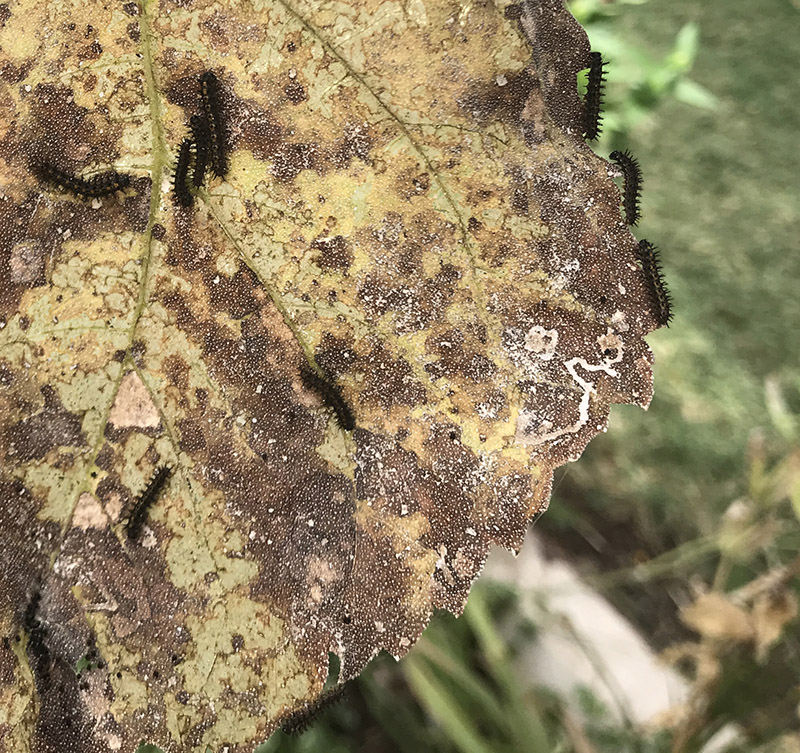
Now, let’s think about how plant communities create resilience. Hannah explained: “So you have a large tree, for example, that’s going to take full sun. It’s going to use up a lot of space. It’s going to grow really tall. But what grows underneath it? So planting understory shrubs and having that area occupied and then ground cover is really important as well. And those take different layers above ground. But their roots also make different use of space below ground. You’ve got deep tap roots, you’ve got shallow fibrous roots, and all of those roots serve to lock the soil in place and to make use of all the available nutrients. And, so, it’s a much more stable community.”
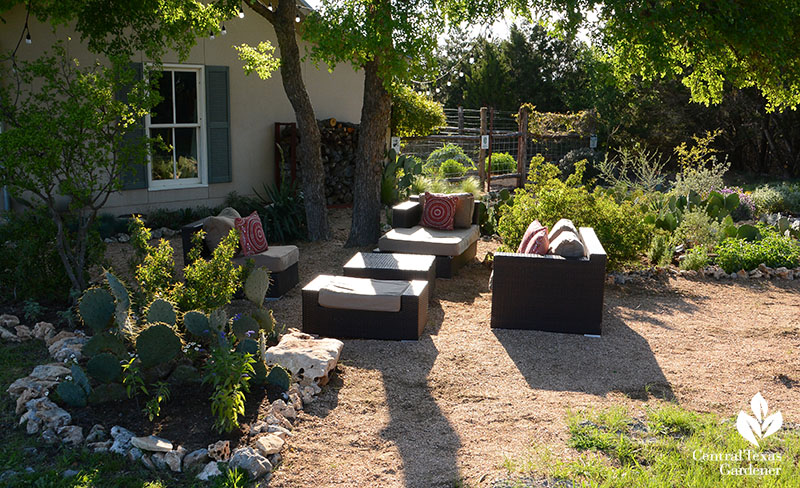
Many plants favor dappled light that filters down underneath large trees, like live oaks. Coralberry, a native low-growing shrub, handles dry shade like a champ in my garden. February’s freeze was a breeze for this one.
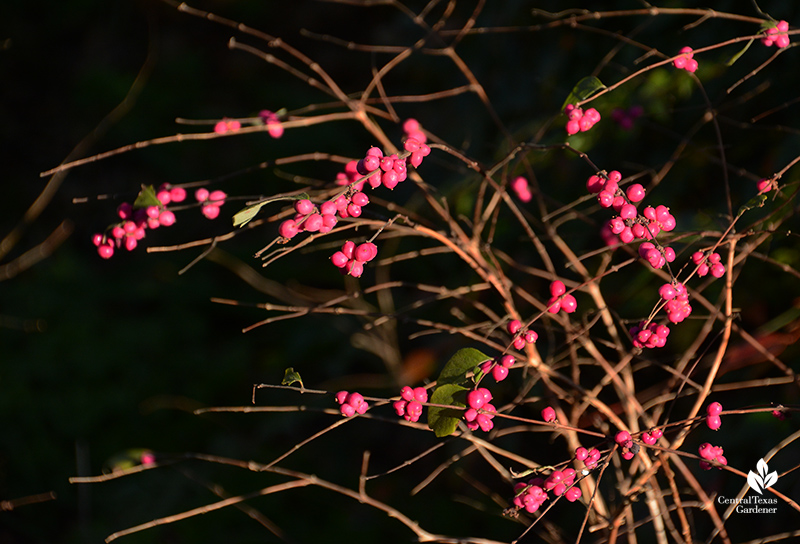
American beautyberry charms the understory with gracious leaves, tiny spring flowers for pollinators, and eye-catching purple fall berries, beloved by birds. We too can eat them, Hannah told us—either straight up or in jams and jellies. Best yet, it’s a mosquito repellent!
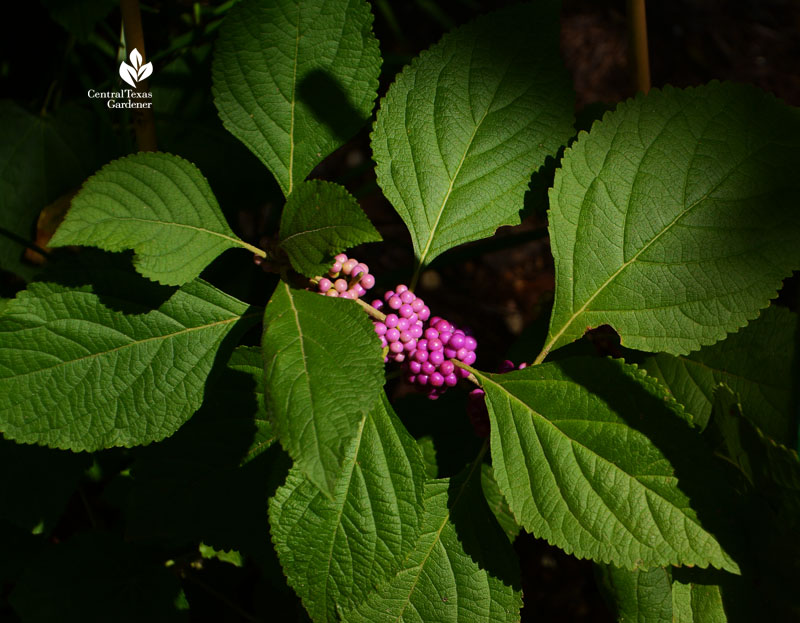
Underneath, plant groundcovers that contribute biodiversity. A winner in my garden is golden groundsel (Packera obovata), one of spring’s earliest bloomers.
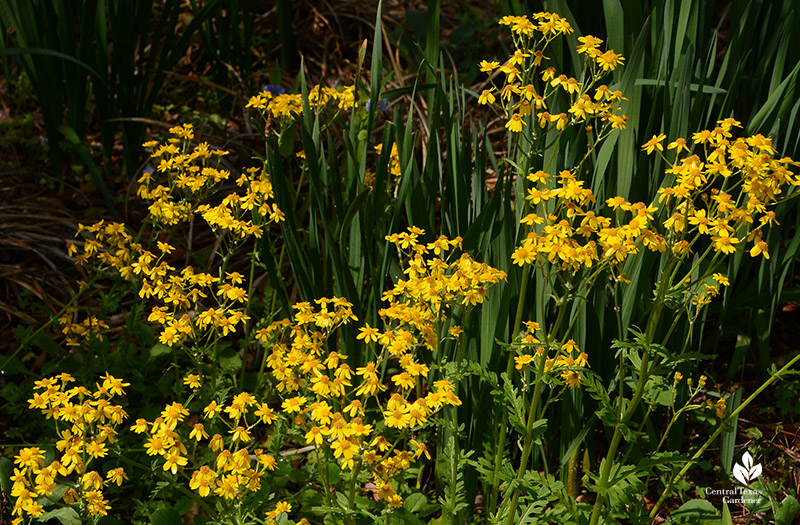
In summer, these colonizing evergreen perennials receive dappled light, while in winter they enjoy full sun and all the attention that flies their way.
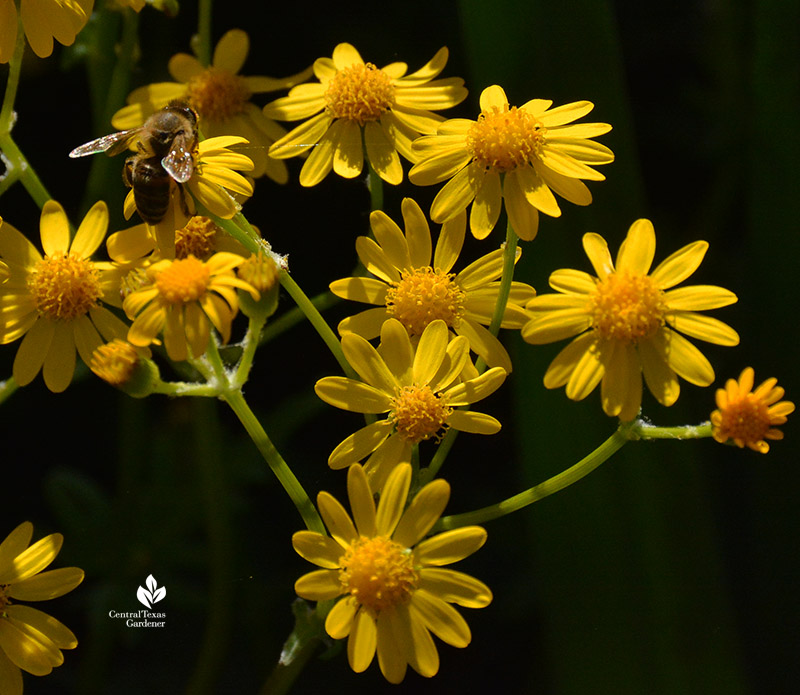
Paired with native perennial spiderwort and annual baby blue eyes, I’ve got a wildlife buffet in just a few feet of space.
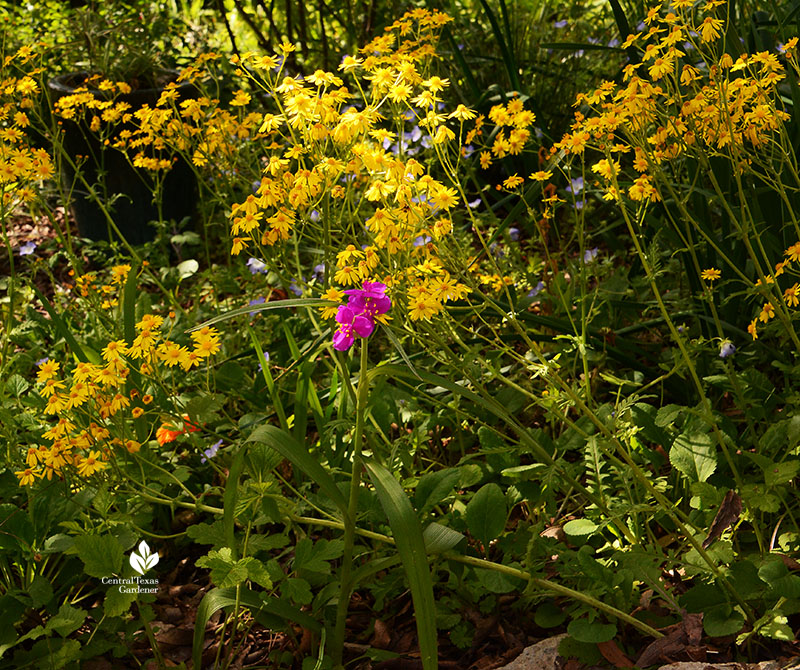
Hannah also recommends white avens, another of my great finds at the Wildflower Center’s plant sale years ago.
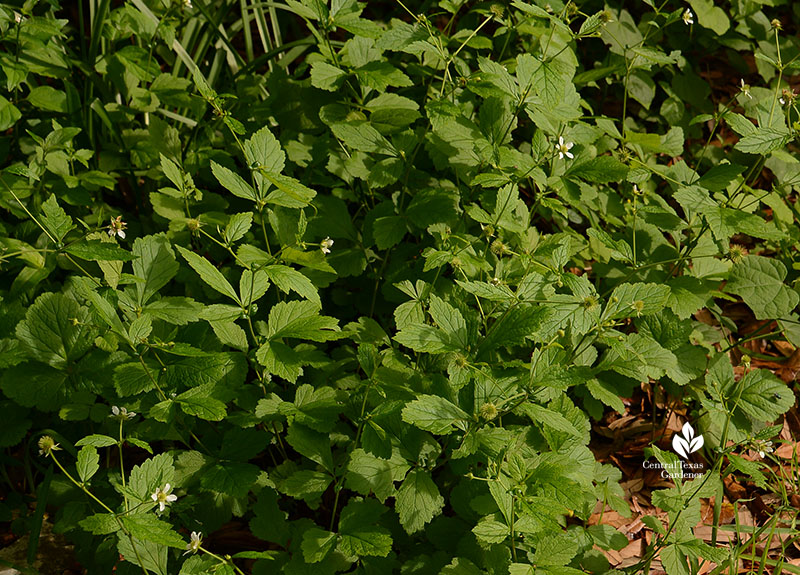
Despite February’s freeze, erratic rainfall, and sparse watering, mine remain evergreen, blooming in late spring.
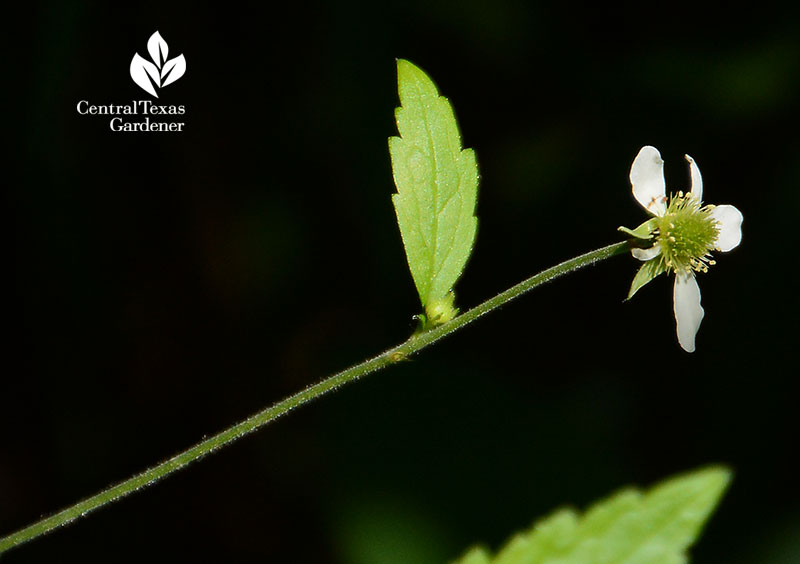
Heartleaf skullcap is another. After going underground in summer, its velvety leaves pop up in winter, producing diminutive lavender flowers in late spring. Since it colonizes by underground roots, it gets rants or raves, depending on your viewpoint.
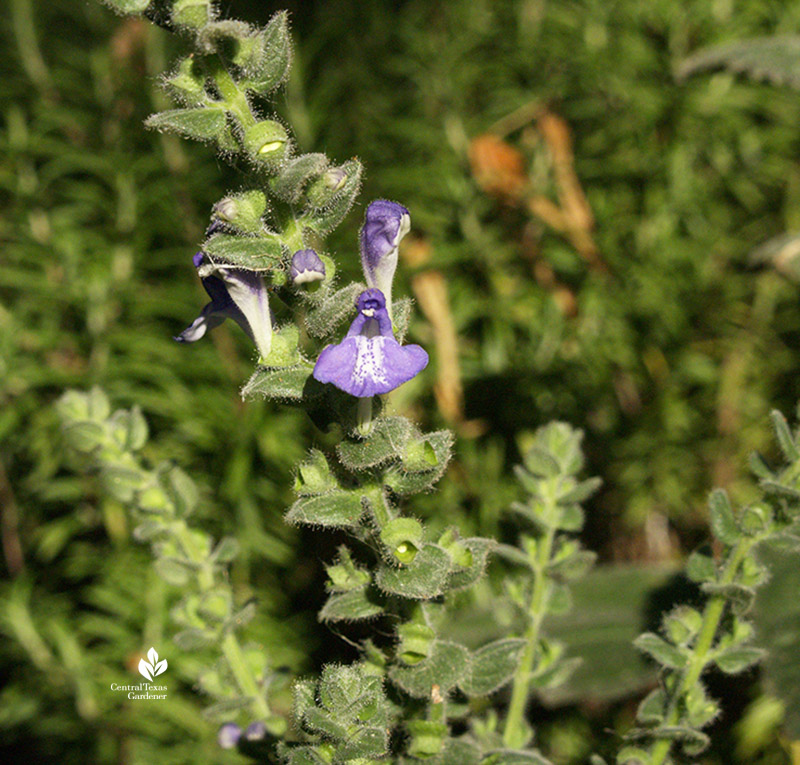
Also in the love it or leave it crowd: straggler daisy (horseherb). I happen to love this free groundcover since it works so well in shade and shade. Plus, small butterflies feed on its tiny yellow flowers. John Hart’s not a fan, though, since it is aggressive and then can disappear. Note: this is not my yard, but a rental property where straggler daisy survives without any caretaking.
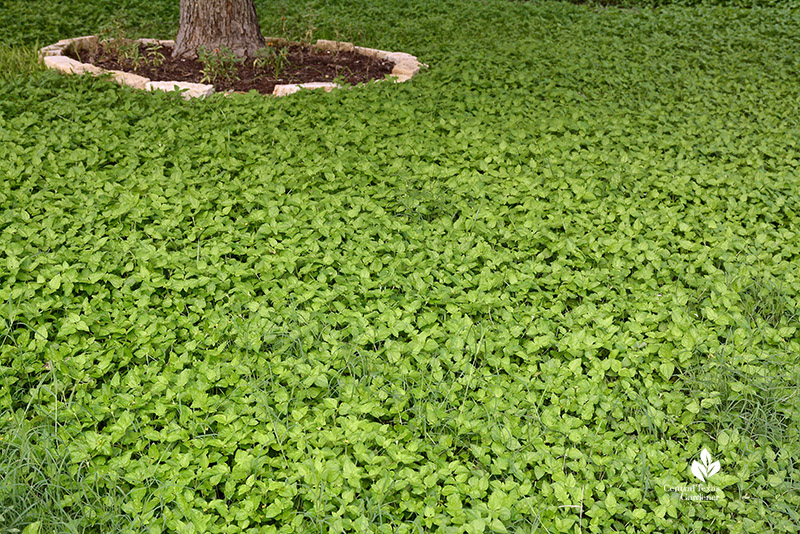
Evergreen sedges and clump grasses can keep it at bay, while anchoring the lower layer. John Hart walked us through sedges and grasses in an earlier conversation.
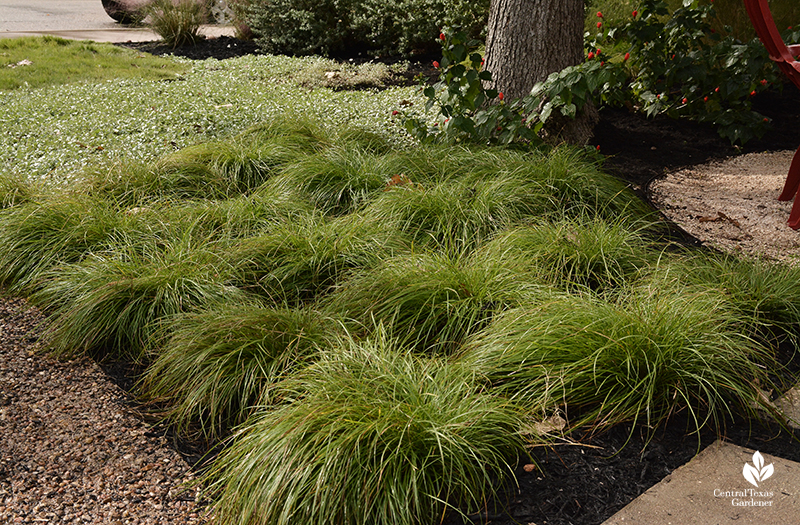
Sedges and grasses leave room to plug in annual wildflowers and perennials. In this front yard garden we visited, a muhly grass hybrid anchors perennial fall-blooming Gregg’s mistflower and biennial standing cypress. There’s room here for that golden groundsel, white avens, spring spiderworts, or heartleaf skullcap.
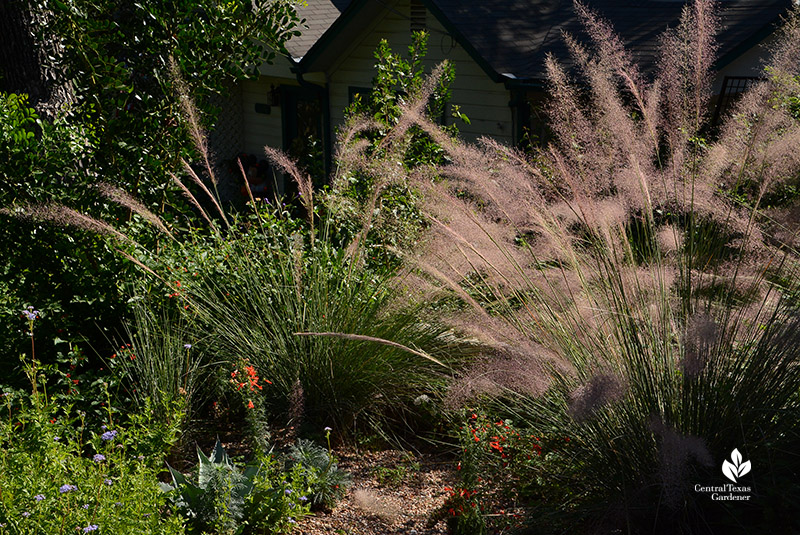
Another benefit to plant communities is that you don’t need to amend your soil! “Native plants are wonderfully adapted to the soils that we have here in Texas, which are challenging soils to work with if you’re planting non-native plants. We can have some really clay soils all the way down to very sandy, dry soil,” Hannah noted. Here’s a little community in John Hart’s garden: globe mallow, Texas star, and inland sea oats.
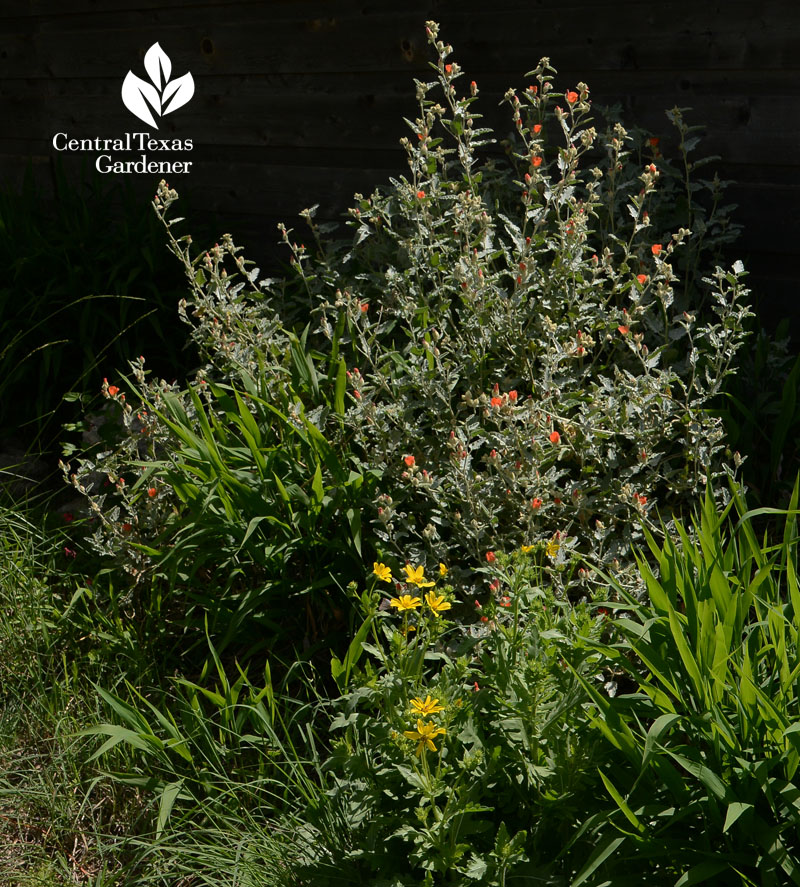
The Wildflower Center can help you find the right plants for your soil type and lighting conditions on their Native Plants of North America database combination search. After all, a plant community on sunny, rocky soil is going to differ than one in heavy clay shade!
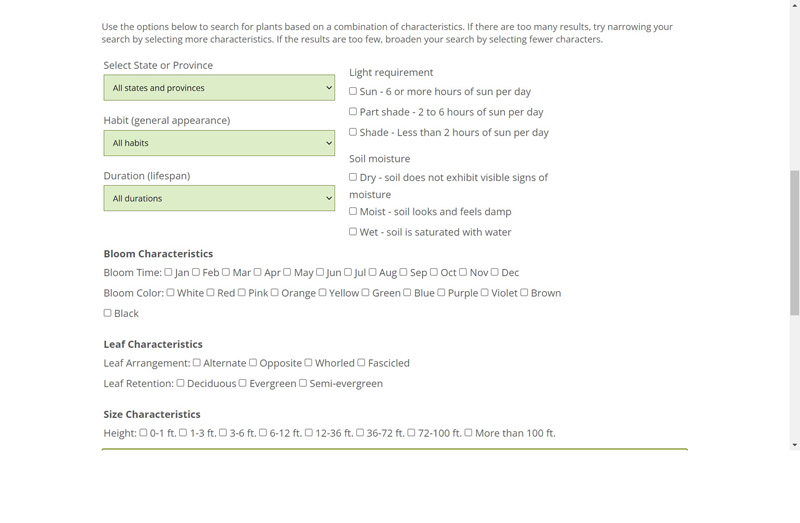
“I would say the thing to do is to pick plants that are adapted to the soil conditions you already have, rather than spending a lot of time, money and effort trying to amend your soil to make it something,” Hannah advised.
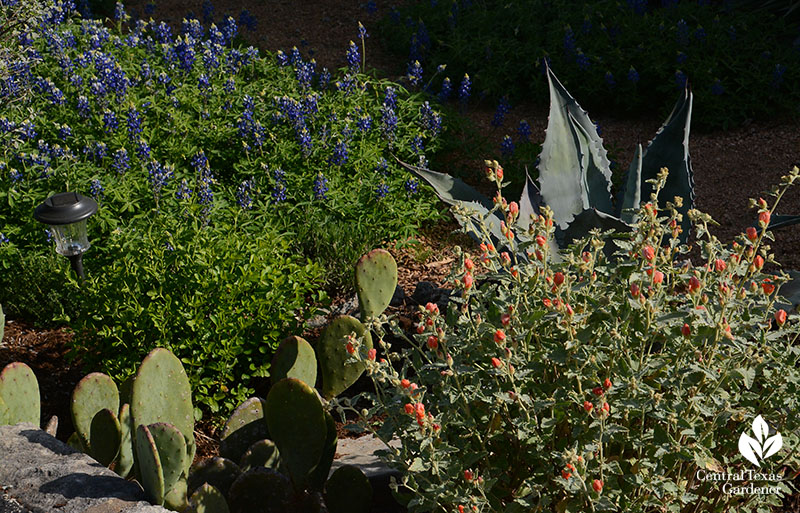
Start your own plant community or add to the one you have at the Wildflower Center’s Fall Plant Sale September 24 – November 7.
Also at the Wildflower Center on October 10: John Hart Asher presents an “Intro to Pocket Prairies” from 10 a.m. – noon. Registration is $35 (members receive discount) and space is limited.
And, check out the Hays County Master Gardeners’ Fall Plant and Tree Sale. This year, the sale is online and in-person at two locations.
Oct. 9: Kyle Public Library
Oct. 13: Dripping Springs Farmers Market
Watch now for a whole lot more!
Thanks for stopping by-it’s wonderful being part of your community! Linda
tags:







